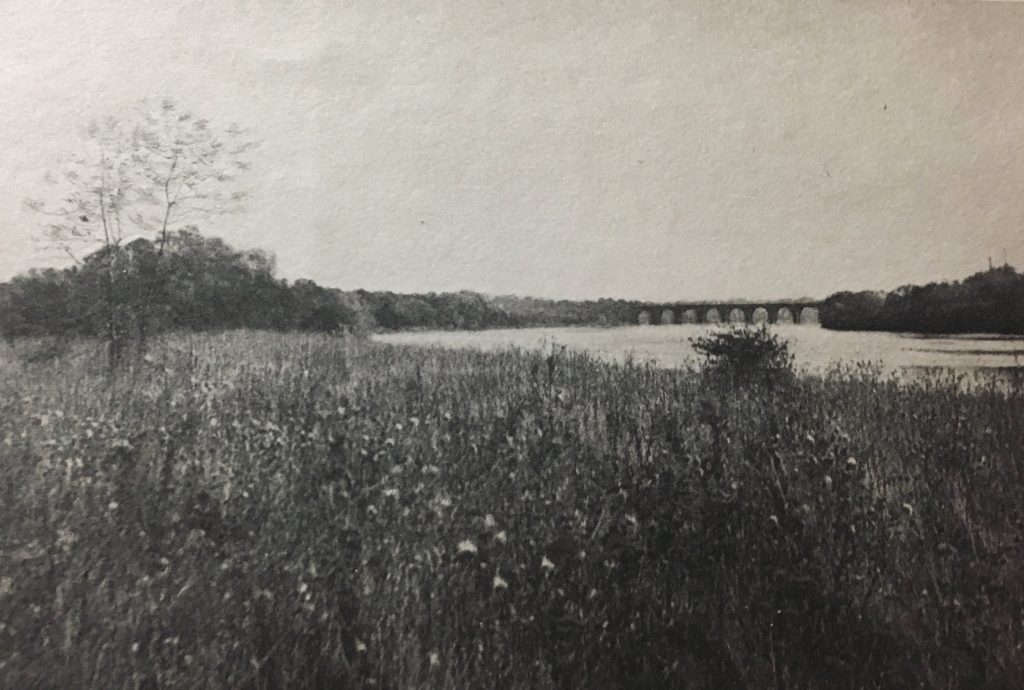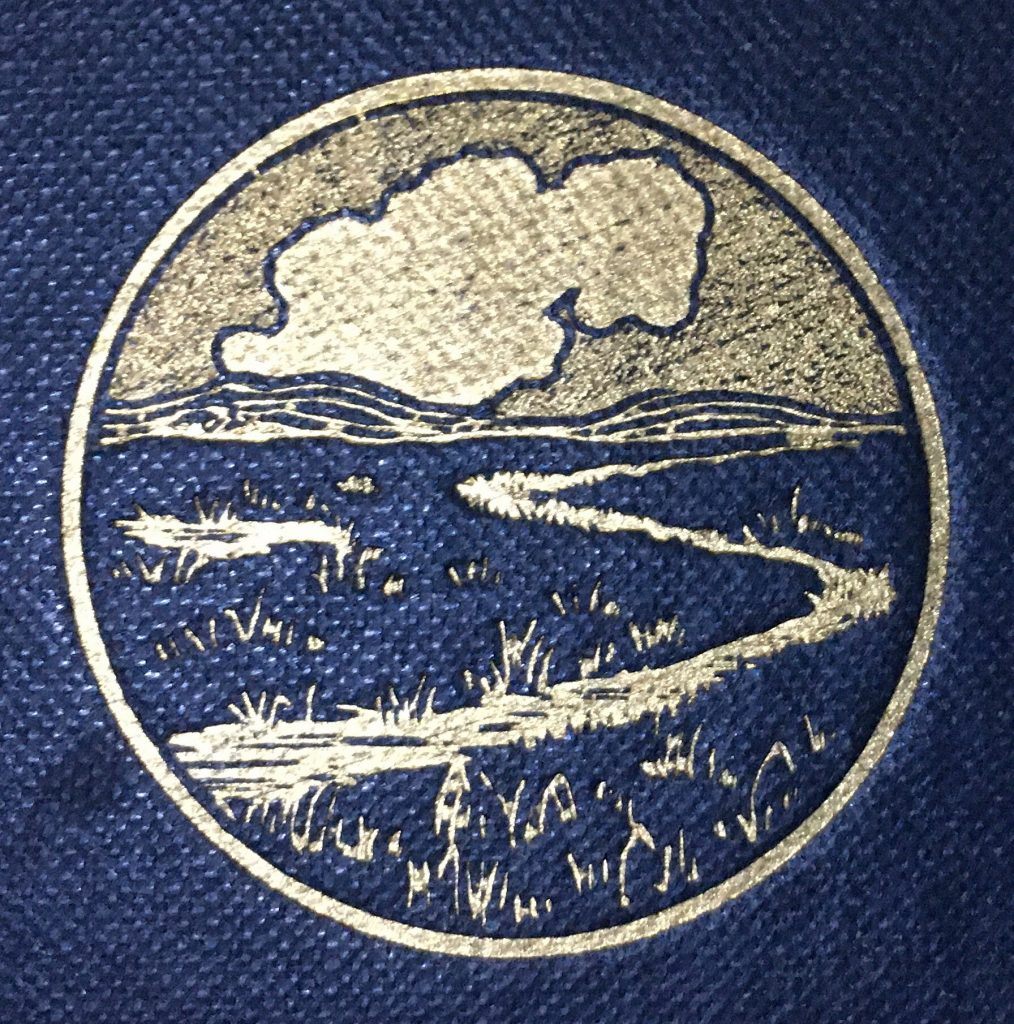A Bewildering Panorama: “The Meadows: Familiar Studies of the Commonplace” by John C. Van Dyke, 1926

The elemental forces — water, air, earth, light — were from the beginning. Man is merely a later happening, dependent upon the elements for existence, and in the scheme of creation little more than a looker-on. Only in recent years has he begun to study his environment and to notice the myriad combinations and manifestations of the elements which he calls Nature. It is still a bewildering panorama to him. He sees and admires the striking high-lights, the bright colors, the huge forms, but he overlooks the half-tones, the broken tints, the lesser forms that make up the great body and background of the picture. These minor keys seem to him ordinary or commonplace. But there are no such words in Nature’s vocabulary. Everything is shaped to an end, in a mould and pattern of its own, and for a specific purpose. The fault is in man’s lack of vision and want of comprehension. He sees and understands only in part. If he saw and understood all he would admire all.
“THE MEADOWS” WAS WRITTEN LATE IN VAN DYKE’S LIFE, AFTER HE HAD ALREADY PUBLISHED CLOSE TO 20 BOOKS, MOSTLY ON ART HISTORY BUT ALSO SEVERAL EXPLORING THE DRAMATIC LANDSCAPES OF THE AMERICAN WEST. Dyke’s best-known work, by far, “The Desert”, had been published nearly a quarter-century before, back when Van Dyke was a spry 42. After traveling afar (and in his imagination — most of what Van Dyke reports seeing and doing in “The Desert” was, it turns out, manufactured from his brother’s experiences and books he read), Van Dyke set his eyes on the humble Raritan Valley of his native New Brunswick, New Jersey, and crafted this book. Like myself setting out on a year-long pilgrimage down Piney Woods Church Road in search of the wonders of the everyday, Van Dyke looked to the woods and meadows for rich colors and forms and intriguing patterns changing across the seasons. As an artist first and naturalist second, Dyke celebrates the colors and textures of the feathers of common birds; he touches upon their behavior also, but there he seems to draw mostly on personal experience and less on scientific knowledge at the time. The book as a whole is flowing panorama of changing colors and forms, and array of exclamations of wonder and delight.
WHAT STANDS OUT MOST FOR ME ABOUT THE BOOK IS NOT THAT IT IS A WORK CELEBRATING LOCAL NATURAL HISTORY, BUT RATHER IT IS A BOOK WRITTEN BY A NEARLY 70-YEAR-OLD ART CRITIC CONFRONTING MORTALITY AND LOSS. There is beauty and delight here, but even that somehow always feels bittersweet. Speaking of the field mice, for example, Van Dyke turns an appreciation of their simple lives into a critique of civilization shortly after the end of the First World War:
Apparently the field mice lead a tranquil existence, raise large families, and feed fat without a varied diet. They are not worried about their hours of labor or their social status, nor are they obsessed by their possessions. They have no large ambitions to gratify, no desire to “get on” or be “progressive” or “up to date.” Their forefathers before them lived in the meadow grass and the orn shock, and probably they long ago concluded that their living conditions could not be improved by fighting the mice in a neighboring corn shock or agitating for socialism or communism in their tribal relations. They accepted the mouse tradition, and carried on with it because they realized that they could not, by taking thought or changing habit, become anything different, try as much as they could or would.
Set against the magnificence of Nature, the human contribution seems so empty, perhaps even irrelevant. Nature is, well, natural, while human art is awkward and forced:
I am continually bringing home from the meadows bare sprays of wild rose, raspberry, bittersweet; dead stalks of thistle, wild rice, wild oats, purple aster; pods of the milkweed, cones of the pine and hemlock, clustered berries of the black haw, bunched seeds of the scarlet sumac. Placed in jars or arranged against the wall, and studied leisurely, they become more marvellous even than in their meadow habitat. One never gets to the end, never gets to the point where all is told, as so often happens with human inventions. Always there is something new, something beyond, something never known before. Nature seems limitless in design, fathomless in meaning.
How these dead stems and branches cheapen the art of man! A spray of bronze-green cedar makes my apple-green tea-jar of the best Chinese kiln look like a common crockery door-knob, and the pod of the milkweed or the cone of the hemlock puts a Renaissance bronze into a gas-fixture category. I account for this with an odd notion that the chemical elements that go to make up the cedar, the cone, or the pod are in perfect accord, agree in every particular, and come together by natural affinity. This coming together under peculiar conditions of soil, light, heat, moisture is perhaps fortuitous — something that may happen in a certain year or century or millenium, and then never again in the world’s history. On the contrary, the vase and the bronze are things arbitrarily put together by man without regard to chemical affinity or time or any other natural combination or circumstance. The result with them is a feeling of things being pushed into false relation, a lack of harmony in color, a lack of unity in design, a lack of quality in texture. We feel instinctively that nature never did, never could, bring forth such a distortion.
ULTIMATELY, VAN DYKE SAVES HIS GREATEST CONDEMNATION OF HUMANITY FOR HIS OBSERVATIONS ABOUT HUMAN DESTRUCTION OF THE ENVIRONMENT. Song and garden birds were disappearing, for instance:
That year by year the lawn and garden birds grow less is perhaps due to the lawn and garden producing less. Coal dust, city smoke, carbonic acid gas in the air and in the rainfall over cities, are not good for the growth of either insects or fruit.
Meanwhile, sprawl had overtaken the landscape — something I am sure he had witnessed first hand in his many decades living in northern New Jersey:
Nature and her progeny change little and have no wish to change at all. Indeed, it is nature’s plan to maintain the status quo, the existing order of things, for a time at least; but man is ever driving her to a wall, sapping her resources, distorting her purposes, establishing artificial conditions. Year by year the border-line is being pushed further back. Civilization and the suburbs are being carried into the fields and forests, and the birds and animals are shrinking away into the inaccessible portions of the earth. Nature did not reckon wisely in bringing forth her last creation — man. She perhaps had no thought that he would prove to be the great destroyer. Least of all did she reckon with his arrogant assumption that the world was given him to destroy.
Consider, too, his bitter, almost nihilistic lines about the polluted Raritan River and its disappearing fish:
Even some of the fishes once native to the stream, such as the sunfish, the perch, the small-mouthed black bass, have disappeared. Chemical factories that spit fumes into the air and refuse, acids, and oils into the streams will destroy almost anything that lives….
No one sighs or protests much about the river pollution and the passing of the fish. A river in these days is usually thought merely as an open sewer for cities. If necessity demands use of the water for drinking purposes, a filtering plant gives it a clean look and chlorine kills the typhoid germs. The conception of a river as something worth while, aside from water supply or drainage, passed out some time ago. Consuming, not conserving, the earth is the present bent. It is sometimes called “development”, which is too often only another name for flaying the face of things for present profit.
BUT WE CANNOT END THERE. It is too dark. There is still joy in this book, even if it is found mostly in the backward glance. While the future of nature and man may be grim, the past is a refuge, freely accessed through memory:
Children gathering flowers! Was that not the earliest recollection, the first introduction to nature, for most of us? That long-ago, far-away day when we first were taken to the meadows! How dreamily we can still remember the scent and hum and warm wind blowing, with white clouds above and a great blue beyond! And out of the vagueness we can still see that picture of waving fields of grass, with daisies and buttercups caught and rolled in the green wave — daisies spattered thicker than the stars in the Milky Way. And later, the trip along the brook where the small fish darted at our approach and the crows were cawing about their nests in the locusts — the trip that led through the woods with all the wonder of its humming life in the month of June! Was not that our first expansion to the glory of the world, even as the growths themselves had expanded to the sunlight and the air!
How those first experiences remain with us and refuse to be ousted by the sordid rush of later life! Down in the street, worrying with the world of business, or hemmed in a factory with the whirr of machinery, or tethered by the leg to some desk in a breathless office, how often a glance at the sky or the distant hills brings back the memories of those childhood days! No wonder there is a sigh over lost youth and a vision of a return to the countryside — to the farmhouse, the orchard, the fields of timothy and clover, the slow-winding brook and the great oak in the meadow, with its branches spread across the pool. We know now, if not then, that one impulse from a vernal wood may last us through a lifetime and be a consecration and a poet’s dream to us forever.It is not necessary that it should be a romantic, a classic, or a haunted wood. Even the commonplace woods of New Jersey may prove sufficiently compelling.
Of course, Van Dyke could not stop there. He closed out the passage with one final dig at modern society, a critique that sounds all the more true today, nearly one hundred years later:
But all that belongs to a bygone age. The humble things to-day fail to make lasting impressions. The rushing world craves the novel and exotic, and in seeking to avoid the obvious it only too often falls into admiration of the merely bizarre.

AS A POSTSCRIPT, A FEW WORDS ABOUT MY COPY OF THIS BOOK. While many of Van Dyke’s titles have been reprinted in paperback, that is not true for “The Meadows”. As far as I can tell, his 1926 edition was never reissued. My copy is a navy blue hardback with gilt letters and a front cover design with a stream flowing through a meadow. The cover photograph of a meadow is the only one in the book. After reading Van Dyke’s insightful remarks about environmental destruction, I regret that this book is so obscure. Any arguments that Americans in the early 1900s didn’t recognize the extent of the damage civilization was causing to the natural world are quickly put to rest by a few excerpts from this volume.
A well-written entry that seems to be a mirror of sorts… it connects to John Stilgoe (his awareness of the richness of the overlooked, the ordinary) well as Thoreau (his powers of observation) and your own projects… thank you for posting!